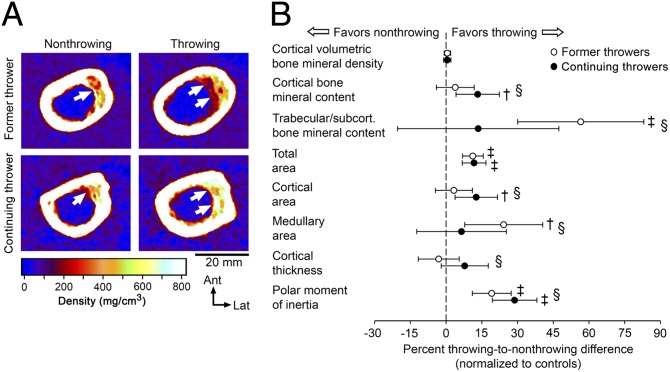Fig. 3.
Continued physical activity during aging maintained a proportion of the benefits in bone mass and more of the benefits in bone strength induced during youth. (A) Peripheral QCT images of the midshaft humerii in representative individuals showed less medullary expansion and cortical trabecularization (arrows) in the throwing arm of the continuing thrower than in the throwing arm of the former thrower. (B) Cortical bone mineral content and density-weighted polar moment of inertia were greater in continuing throwers than in former throwers and controls; cortical thickness was greater in continuing throwers than in former throwers; and trabecular/subcortical bone mineral content and medullary area were smaller in continuing throwers than in former throwers. Data show the mean percent difference and 95% CI between the throwing arm and the nonthrowing arm in throwers normalized to the differences between the dominant arm and the nondominant arm in controls. CIs greater than 0% indicate greater differences between the throwing arm and the nonthrowing arm in throwers than between the dominant arm and the nondominant arm in controls (†P < 0.01; ‡P < 0.001); § indicates significant differences between continuing and former throwers (P < 0.05; one-way ANOVA with Tukey post hoc comparisons).

